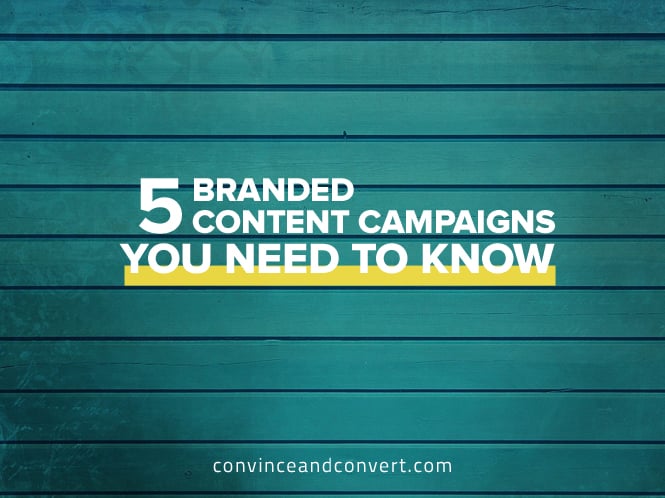5 Branded Content Campaigns You Need to Know. In January, I wrote about “The 7 Worst Ad Campaigns of 2015” and received great feedback from the community. Today, such advertisements, which include videos, interactive infographics, and articles, are quickly gaining traction among both brands and publishers. These headsets were sent in preparation for NYT VR, a virtual reality mobile app The New York Times developed, designed to provide its readers with innovative and powerful storytelling. In September, Mini released two branded films, “Backwater” and “Real Memories,” while GE released “From Nature to Machine.” This launch was an awesome win for all parties involved: The New York Times received more downloads for NYT VR in the first four days than any other Times app in history. Naturally, Toyota, which developed a hydrogen fuel-cell car called the Toyota Mirai, figured they could use “Back to the Future Day” to their advantage. The Lego Movie The Lego Movie is perhaps the best example of branded content I can think of—and as leader in the advertising industry, I’ve seen my fair share. Gatorade “Win from Within” Series In 2012, Gatorade launched its “Win from Within” campaign. Rather, it had behind-the-scenes help from DanceOn, a digital network cofounded by Madonna that promotes dance content. The number of great branded content examples out there continues to grow as more and more publications and brands adopt this creative strategy, and they’ll only get better with time.

In January, I wrote about “The 7 Worst Ad Campaigns of 2015” and received great feedback from the community. It inspired me to create this piece—if we can learn from the worst, then we can also learn from the best.
In the last article, I focused on advertisements in general. However, this time I’d like to introduce a new theme: branded content, or content that subtly blends into editorial publications and other media communications.
Today, such advertisements, which include videos, interactive infographics, and articles, are quickly gaining traction among both brands and publishers. In fact, you’ve probably scrolled through thousands of them on CNN, BuzzFeed, USA Today, etc., without consciously recognizing branded content.
Ad blockers have become more popular than Donald Trump, and because both advertisers and publishers are suffering from ad blocking, branded content and native advertisements are being championed as a solution to the overwhelming revenue losses. (highlight to tweet) It’s proving to be a great alternative to traditional banner ads, which users are resisting.
Intrinsically, branded content is subtle and indirect. If there were a scale, standard advertisements would be Kanye West, and branded content would be Natalie Portman. Plus, if branded content (usually great advertisements that don’t blatantly promote their products) adds to the publication’s credibility and entertainment value, there’s not much reason for users to continue raising their pitchforks against the advertising industry.
Here are five examples of branded content that are more than worth our praise.
1. The New York Times, Google, Mini, and GE
If you still get The New York Times delivered to your doorstep each morning, then you probably received a pair of Google Cardboard virtual reality headsets in the mail last November. These headsets were sent in preparation for NYT VR, a virtual reality mobile app The New York Times developed, designed to provide its readers with innovative and powerful storytelling. GE and Mini sponsored the NYT VR launch, each providing the mobile app with their own virtual reality films. In September, Mini released two branded films, “Backwater” and “Real Memories,” while GE released “From Nature to Machine.”
This launch was an awesome win for all parties involved: The New York Times received more downloads for NYT VR in the first four days than any other Times app in history. It was a revitalizing victory that put The Times back in the forefront of the conversation. Google, which has been marketing Google Cardboard the last couple of years, garnered one million new users in just a few days. GE and Mini were not only able to share their brand with over one million users, but they were also able to engage them in a way that their competitors could not—that is, by utilizing the emotional, powerful, compelling nature of virtual reality storytelling.
2. Back to the Future and Toyota
In Back to the Future II, Marty McFly, Doc Brown, and Jennifer Parker squeezed into a DeLorean and traveled to October 21, 2015. In October of 2015, Back to the Future fans everywhere celebrated the first and last “Back to the Future Day.”
In the film, Doc Brown’s DeLorean runs on garbage…
COMMENTS